Public School No. 66
Introduction
Text-to-speech Audio
The large red brick building at the corner of 102nd St. and 85th Ave. in the Richmond Hill section of Queens is Public School No. 66. The P.S. No. 66 building dates to 1898 to 1899, although it did not open as a public school until 1901. A three-story rear addition on the east end is from 1905 - 1906. The school has been known by a number of names, including Brooklyn Hills School, the Oxford School, and since 2003 as the Jacqueline Kennedy Onassis School (for her passion for historic preservation and literacy). The school building was listed in the New York and National Registers of Historic Places in 2003 and was designated a New York City landmark in 2010. The building continues to hold a public grammar school.
Images
Front of Public School No. 66 along 102nd St. in 2003 photo for NRHP nomination taken by Nancy Kataldi
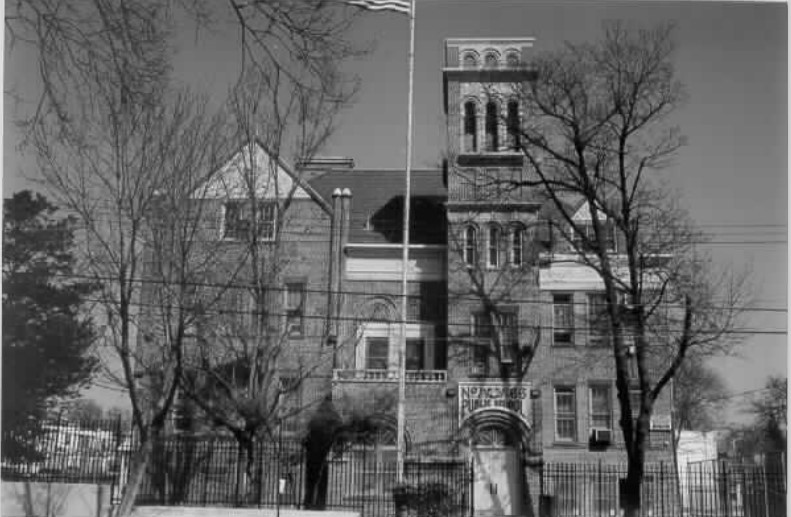
Two best friends on first day of school in NYC in September 1915 (George Grantham Bain)
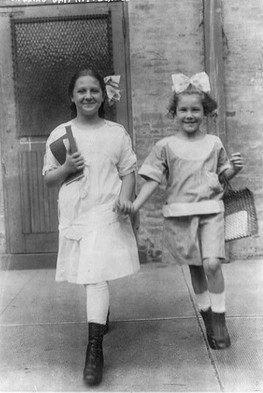
Main entrance with recessed, round arched doorway below an ornamental panel reading " No. 66 Public School" (Kataldi 2003)
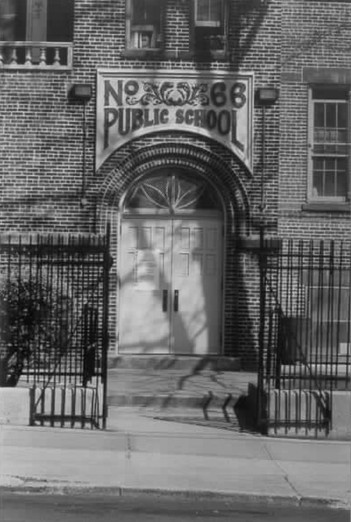
Detail of tower of P.S. 66 building in 2003 photo (Kataldi)
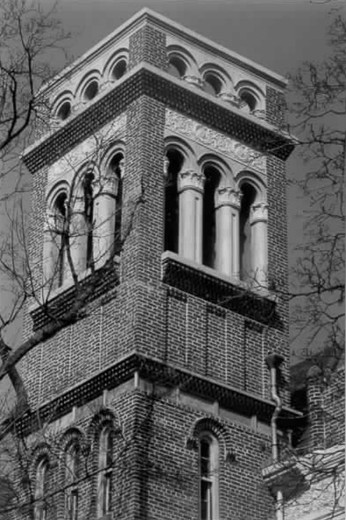
P.S. 66 on 1911 Sanborn map (Vol. 4 p. 8)
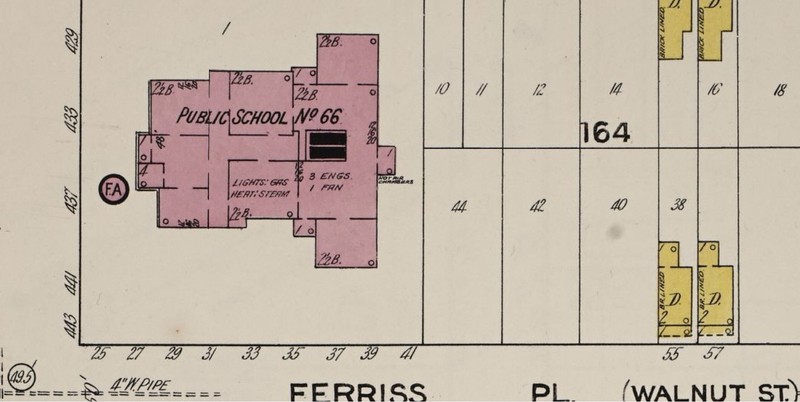
North side of P.S. 66 in 2008 photo; addition far left (Christopher D. Brazee for NYC LPC)
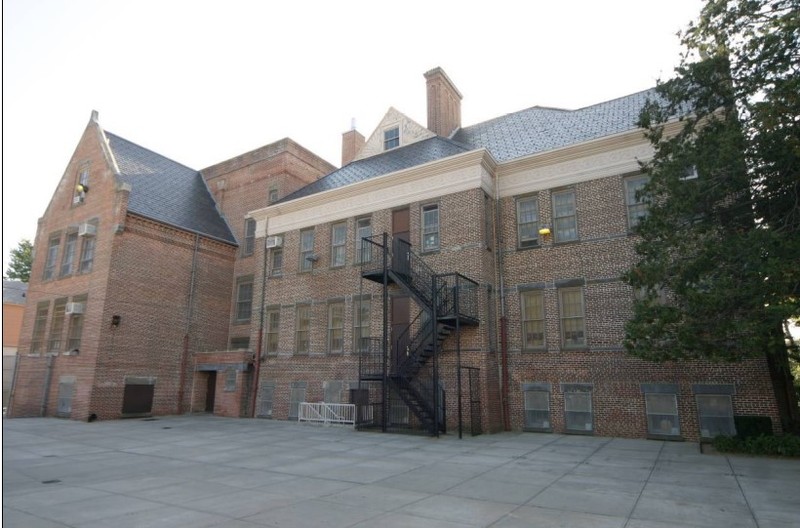
Backstory and Context
Text-to-speech Audio
Public School No. 66 was built in the Union Free School District #7 of the Town of Jamaica. The architect of the Victorian Eclectic style structure with Romanesque Revival details is unknown, but was probably C.B.J. Snyder, Superintendent of School Buildings for the Town of Jamaica in Queens; the contractor was a carpenter from Brooklyn Hills in Queens named Thomas J. Clarke. The school was built when Queens was newly made a borough of New York City and the administrations of the previous school districts were dissolved and consolidated into the NYC schools administration in Manhattan. The school is 2.5 stories tall on a raised basement, made of brick with sandstone and terra cotta details on a stone foundation. There are gabled dormer windows in the attic space and ornamental stucco details in the gable faces. The original flooring when the school was finished in 1898 was wood and the sloping roof was covered in slate. A 1980s renovation replaced the roofing tiles with asphalt shingles, but an historic restoration project in 2001 replaced the covering with slate once again. The open belfry of the Romanesque Revival style tower used to summon children to school with a bell that has since been lost. The wooden access to the belfry from the attic had deteriorated and the tower's restoration was delayed until the 2000s. Two brick chimneys used to lead from classroom fireplaces; and heated the attic where the early custodians and their families lived. Spaces between two first-floor and two second-floor classrooms were designed to hold firewood.
Two twins of the P.S. 66 building (P.S. 64 and P.S. 65) once stood in the area but have since been demolished; P.S. 64 was on Broadway near Shore Ave. A brick and steel-beamed rear (east) addition to P.S. 66 in 1905 to 1906 allowed for a coal-burning furnace in the basement with its own chimney, classrooms on the first and second floors, and a third-floor auditorium. The school and addition cost over $139,000 to build. Some complained to the local newspapers that two new schools in Woodhaven/ Richmond Hill were still vacant in 1900, while many schools in the Borough of Brooklyn were so severely overcrowded that students attended a half-day so another group could attend the other half of the day. The P.S. 66 neighborhood's population numbers hadn't caught up yet, since the local farmland hadn't been transformed into subdivisions yet. Finally, on February 1, 1901, P.S. 66 opened as "The Brooklyn Hills School." Four years later, the school's seven classrooms held 278 students. Many were the children of Italian, German, and Irish immigrants. By 1918, the classrooms numbered 18 with 768 students.
The original Parent and Teachers' Association (PTA) at P.S. 66 was called the Kindergarten Mother's Club. They successfully pushed for a Long Island Rail Road viaduct to eliminate trains crossing a nearby street, and paving of the pathway from Jamaica Ave. to Union Place. The former names for the nearby streets were Freedom Ave., then Union Place (for 102nd St.). Tulip St., then Emerson St. (85th Ave.); and Walnut St., then Ferriss Pl. (85th Rd.).
In May 1997, New York City Mayor Rudy Guiliani came to P.S. 66 to announce a new initiative to the media; "Project Smart Schools" would provide each NYC school four computers, a printer, and an internet connection by 1998.
Sources
Anonymous. "Woodhaven Has More School Room than Children to Fill it." Brooklyn Daily Eagle (Brooklyn) May 18th 1900. 5-5.
Keenan, Bernadette. Kataldi, Nancy. NRHP Nomination of Public School 66, Queens County, N.Y. National Register. Washington, DC. National Park Service, 2003.
Most, Jennifer L. NYC Landmarks Preservation Commission. Designation Report, Public School 66...85-11 102nd St....Queens. Volume LP-2317. NYC landmarks. New York, NY. NYC Landmarks Preservation Commission, 2010.
New York State Cultural Resource Information System (NYS CRIS): https://cris.parks.ny.gov/Default.aspx
George Bantham Bain Collection, LOC: https://www.loc.gov/resource/cph.3b01989/
NYS CRIS: https://cris.parks.ny.gov/Default.aspx
NYS CRIS: https://cris.parks.ny.gov/Default.aspx
Library of Congress (LOC):
NYC Landmarks Preservation Commission 2010 report (Most et al.)
